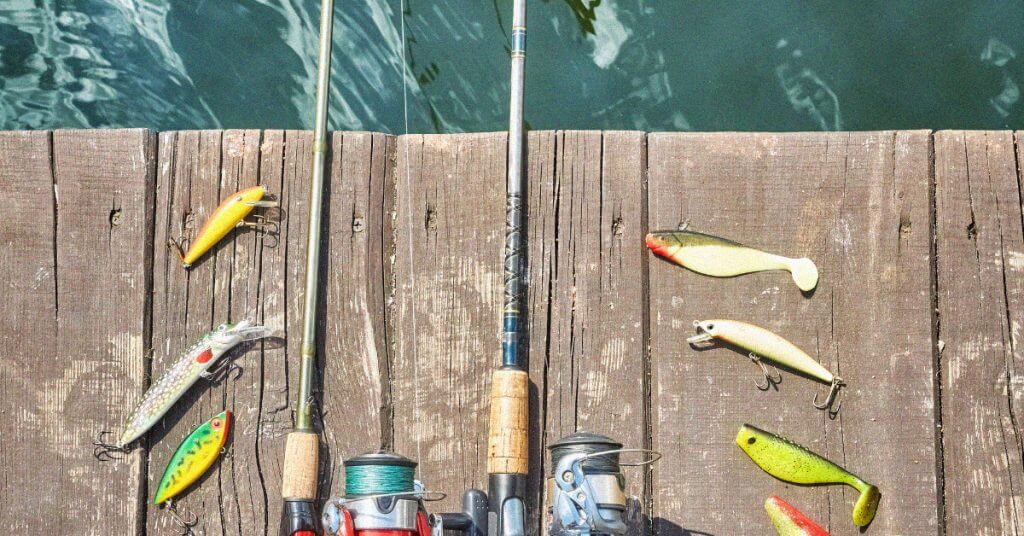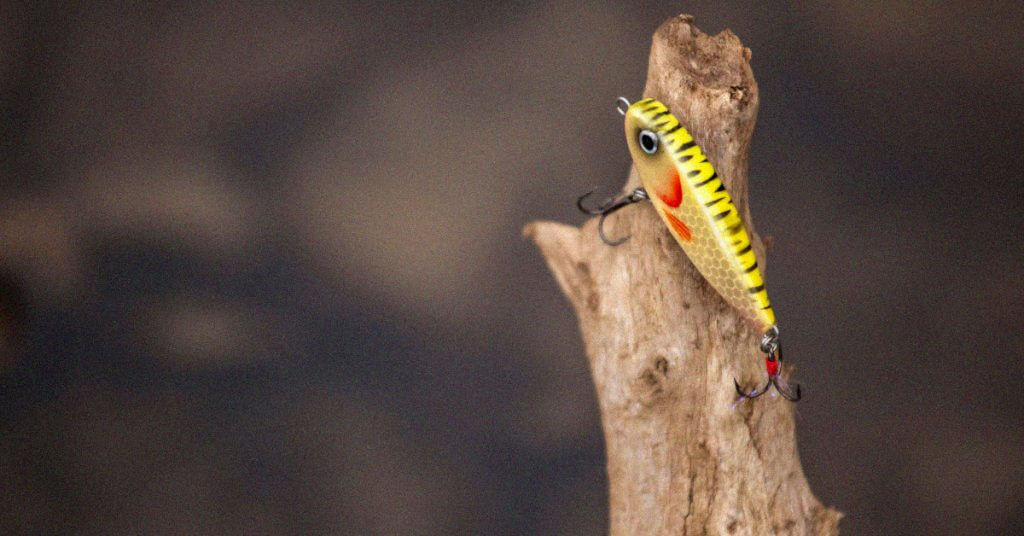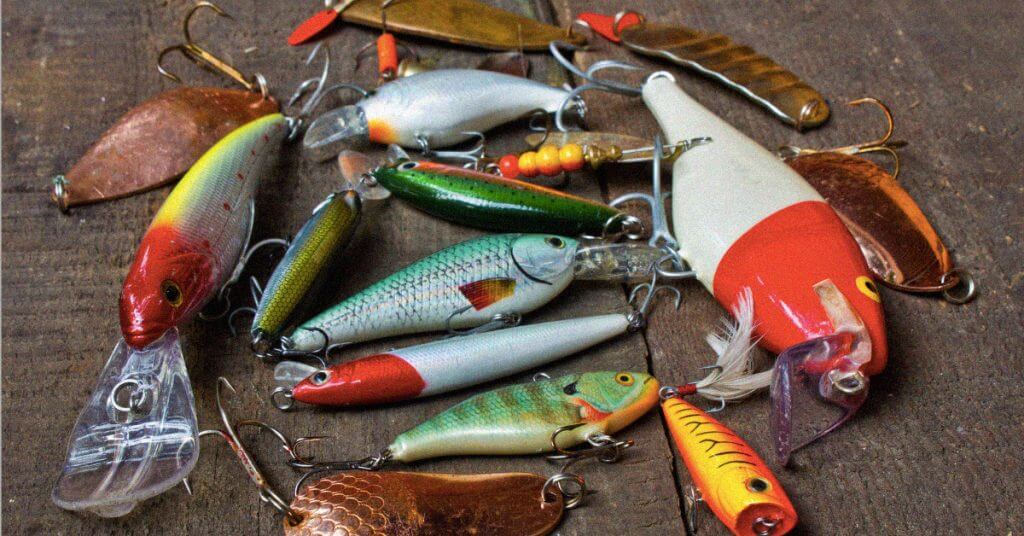Spring is finally upon us, and if you’re not much for ice angling, you’ve likely got that itch that can’t be scratched without a day on the water.
Around mid-February is when I start getting my spring gear together, and with that comes shopping time for the best lures for spring bass.
As I crack open my tackle box and look at all the lures I used and abused last year, I start to take a mental inventory of everything I need to add.
I predict you’re doing the same.
It’s important to have dedicated spring bass baits for a few different reasons. I’ll explain them later on down in the article.
I’ve scoured the internet combining my own experience with those of other anglers to compile this expert list of the best bass lures for early spring and beyond.
Crankbaits
It’s hard to beat the power and capabilities of a crankbait.
The best spring bass lures come in vibrant colors, they make a lot of noise, and they’re able to propel their way through heavy cover.
This lure provides almost all of that, except for the noise factor.
Go Lipless
While I typically recommend a square-bill crankbait, going with a lipless option is great early in the season when the fish are still feeling a bit timid.
You’re less likely to spook them this way.
Split Lip is Good Too
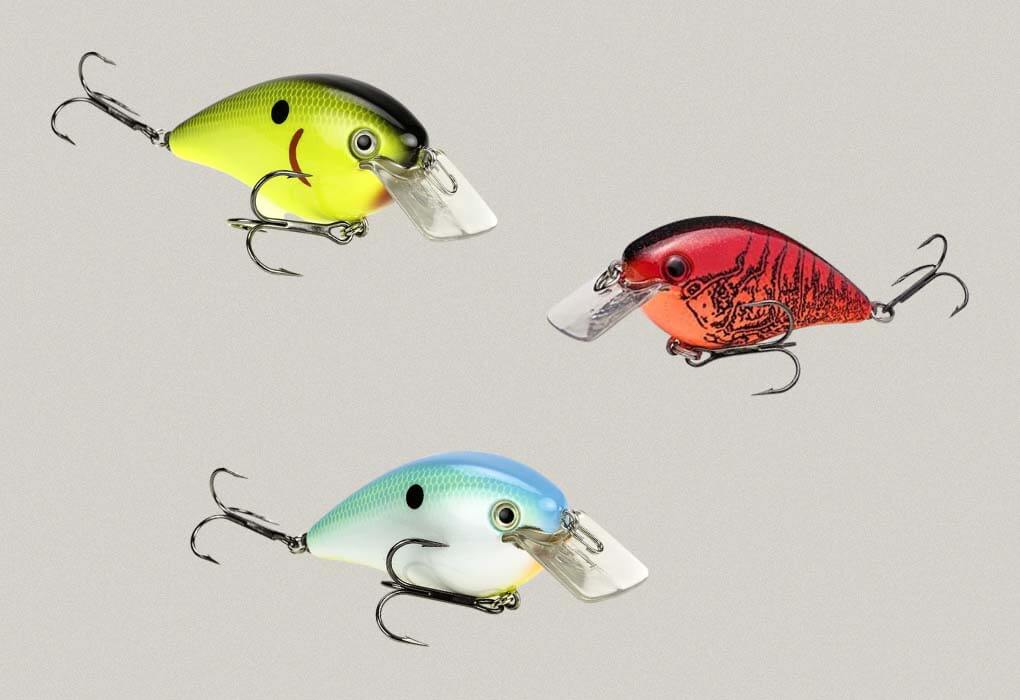
I wish more crankbaits came with a split-lip on so it would create vibration in the water, but it does a great job of bouncing off the rocks so that would make a slight disturbance.
I would choose this over a lipless crankbait in most situations.
Again, if things are really slow and the fish aren’t biting then you might want to avoid a presentation this loud.
But I find that fish become really active in early-mid Spring because of the spawn.
Recommended Crankbait: Strike King KVD 8.0 Magnum Square Bill Crankbait
Spinnerbaits
Spinnerbaits are some of the best finesse lures for spring time fishing.
You can cover a lot of water, generate a nice flash, and make enough noise without scaring everything away.
Go With Booyah
If you love fishing spinners, you can’t find one better than this from Booyah. This spinnerbait comes in a variety of colors, and it has two blades for an extra noisy presentation.
Part of winning with the best lures for spring bass is having one that makes a lot of noise.
This spinnerbait will create an exceptional presentation, and if you have a bit of experience under your belt, you’ll have no problem catching bass during the spawning season.
Fish the Shallows
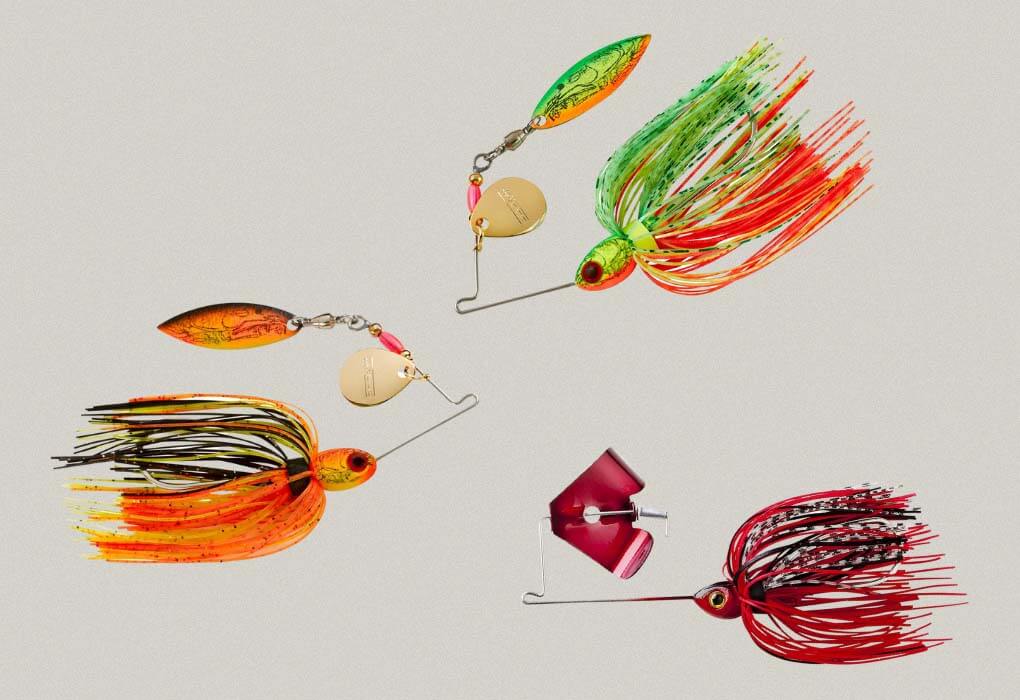
During the spring is when spawning season begins for most species and for this reason, you want to target the shallow areas of the pond or lake you’re fishing.
Spinnerbaits are great for this but you want to be careful with the weeds.
Spinners are known to get hung up easily and take a lot of weeds with them which messes up your presentation.
It’s important to look for hard cover like docks, boats, and rocks because these tend to be the warmer areas of the water.
Recommended Spinnerbait: Booyah Pond Magic
Suspended Jerkbaits
Jerkbaits take the shape of everything you’ll want to use during the spring and here’s why.
Natural Presentation
First, fish tend to strike whatever it is they eat most naturally in the water.
A suspended jerkbait is about as close as you can get to that. During the transition from cold to warm, this is especially important.
Twitch and Pause
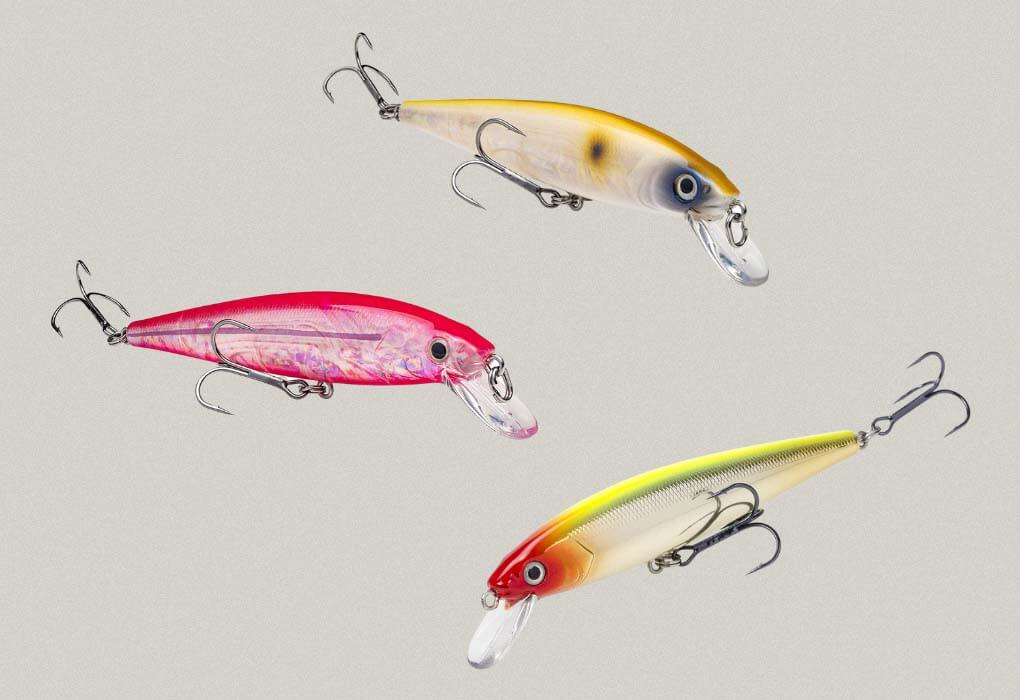
The twitch and pause presentation is most popular. It involves giving the lure a slight jerk, letting it fall for a few seconds, and repeating the process.
Depending on what type of jerkbait you have, it could have a lip that causes it to act erratically on the jerk or it could even have an internal rattle that makes a lot of noise each time you jerk it.
Recommended Jerkbait: Strike King KVD 2 Hook
Soft Plastics
My all-time favorite lure is a soft plastic worm, yeah I’m pretty basic. Here’s why I love them for spring. First, they usually come in a wide variety of colors, and you want to choose the brightest color possible. You want to threaten the bass, and this lure is great for finesse fishing for largemouth and smallmouth bass.
Texas Rig
The Texas Rig is my all-time favorite because it’s weedless and great for casting into the shallows where the lunkers are hanging out during pre and post-spawn.
This is the time of year where you really need to think about location since bass aren’t as mobile.
If you’re not rigging your bait in a way that allows you to literally toss it into the weeds, you’re missing out.
Color Matters
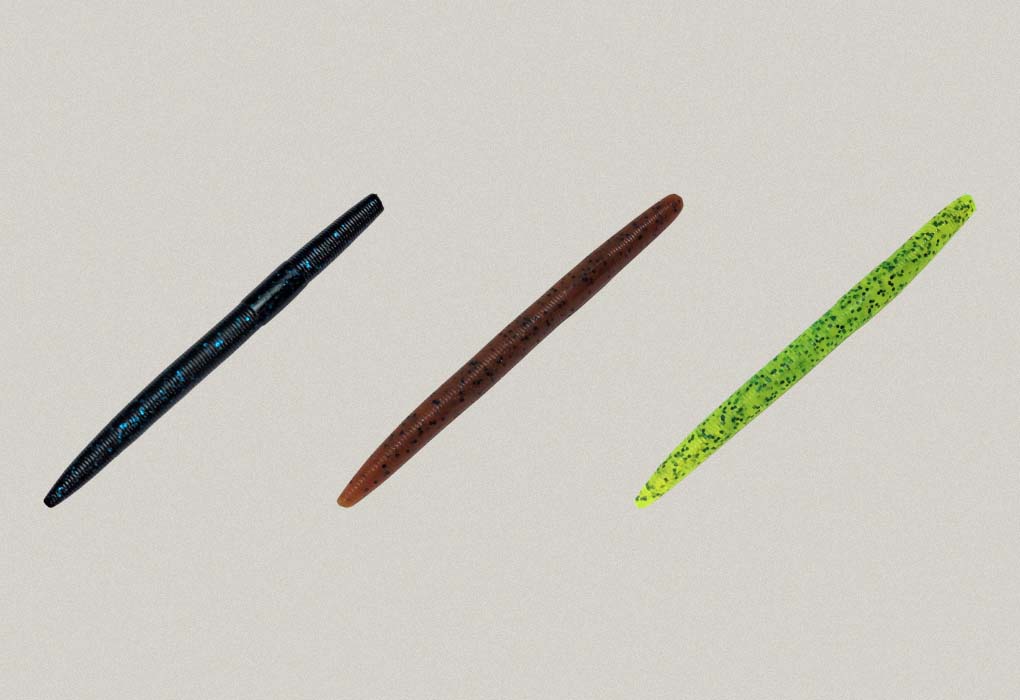
The water tends to be murkier than ever in the spring because of all the runoff and rain so this is a time where the color of your lure is going to make a difference.
When the water is clear, I recommend choosing something natural that matches the surroundings.
But, when the water is brown and it’s impossible for the fish to see your lure, you need something bright.
Red, orange, and pumpkinseed are a popular color around this time.
Recommended Soft Plastic: Tailored Tackle Wacky Worm
Early Spring Bass Fishing Lures
There’s a bit of a difference between spring bass lures and early spring bass lures. The reason for this is water temperature and fish activity.
Powerbait
I’m stepping outside the box with this recommendation, but I personally love PowerBait.
Berkley has a great reputation for developing lures and baits that exceed the competition. These worms mimic insect larvae, they’re scented, and they have a natural color.
Best of all, there is an endless variety of shapes, colors, and scents. Choosing the best bass fishing lures for early spring is all about subtly so keep that in mind as you read through this section.
Low Visibility
The only downside here is visibility. The water tends to be extremely murky during the spring from snow runoff, so you’ll want to pick something that is vibrant.
The good news is that low visibility can actually have a positive upside as well.
If the water temperatures are still a bit cold and fish aren’t biting, the smell matched with the low threatening nature of PowerBait can actually increase your chances of getting a bite.
Match it
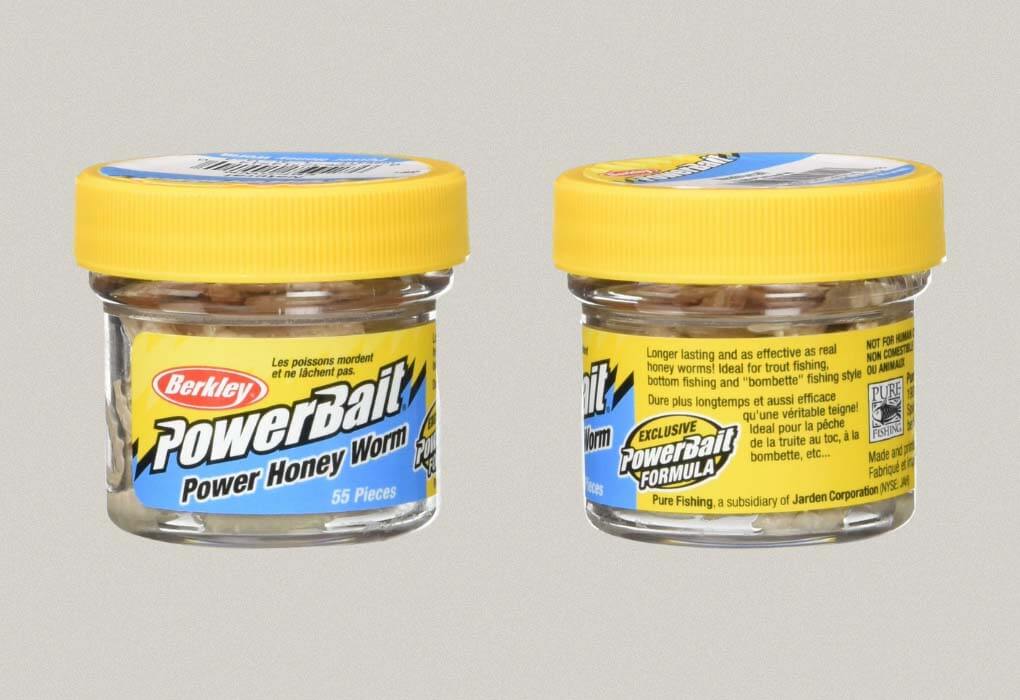
One of the best ways to use PowerBait is to match it with a jig or soft plastic fluke or tube.
Use the PowerBait to compensate for the lack of realistic presentation on some other lures. The added scent from the bait is a great way to increase your chances of getting a hard strike.
These are great especially during pre-spawn when the water is cool and the fish aren’t as keen to strike something big and loud.
Recommended PowerBait: Berkley PowerBait Honey Worms
Jigs
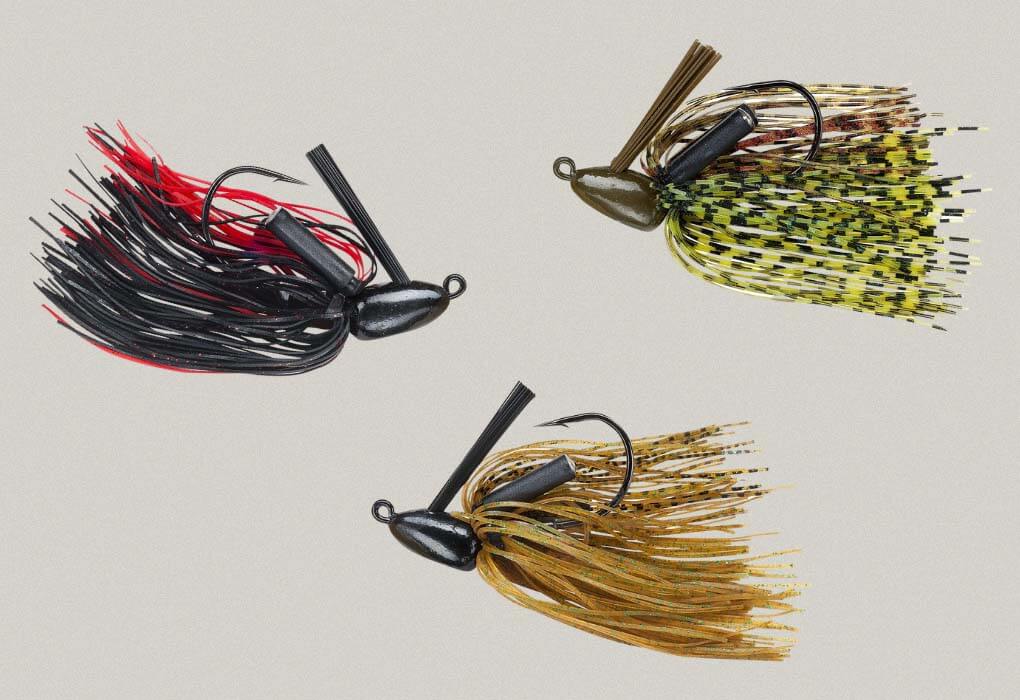
Jigs work great most of the year and there are few times where it’s really a “bad” choice to use a jig.
The presentation is mild, you can size it according to how the fish are biting, and you have a lot of options in terms of what kind of jig you want to use.
Skirted Wins
Bringing it back to Booyah with this skirted jig. It has two rattles that create an excellent presentation, and the manufacturer recommends using an 8-10 pound test with it.
It’s pretty much your standard jig head, so there’s not much that makes it stand out.
I prefer skirted jigs for the spring because it helps you weed your way through vegetation, which is where you’ll find most of the bass this time of year.
Jigs work great post-spawn when the bass are most active. Spawn bass tend to stay around the nest without roaming to deeper water.
Upgrade to Bladed Jigs
Watch the YourBassGuy.com YouTube video above as I test the best bladed jigs on the market.
If the bite is hot, you can upgrade to a bladed jig which is essentially the same thing but it has a reflective blade on the top.
These create a bit more intense presentation because of the flash and they work great on both smallmouth and largemouth.
Recommended Jig: Booyah Boo Skirted Jig
How to Choose the Best Baits for Spring Bass Fishing
You’ve seen the choices, so now let’s talk a little about why I chose these as my best bass baits for spring. There are a few things you’ll want to keep in mind when choosing your lures.
Of course, you also want to take your own preferences, experience, and knowledge into consideration as well.
Also, don’t forget that location plays a major role in your strategy here. You’ll want to figure out when your spawn is based on where you live in the country.
Shallow vs. Deep Water
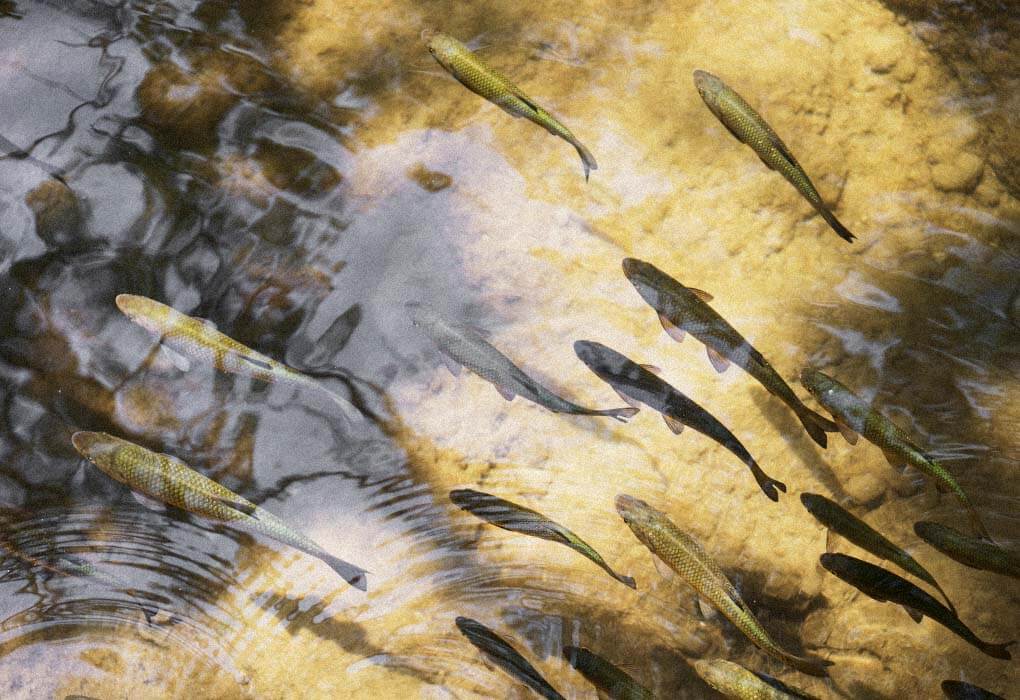
Spring is spawning season, so most big bass will retreat to shallow water in the morning and evening, and they’ll swim to the deep water in the middle of the day to find food.
They’re cold-blooded, so their metabolism is based on the water temperature.
As the water starts to warm up, they will become more active, which means they’re going to start eating a lot more, so that makes spring a great bass fishing time of the year.
When you have cold water you’ll want to use a smaller finesse worm.
That said, you need to keep in mind that you will spend a lot of time trolling the shoreline and casting parallel if you’re fishing from the shore or a dock.
Topwaters work great for this because they mimic surface insects.
Now that you know this factor, you need lures that will break through heavy cover and vegetation because the bass will spend a lot of time guarding their spawn.
They will spawn in dense cover. That’s why we turn to lipped crankbaits, rubber worms, jerkbaits, and other baits that will cut through the vegetation.
Compensate for Low Visibility in Murky Water

If you’re reading an article about springtime bass fishing lures, I will assume you live in a place with four seasons (or if you live in Pennsylvania – two seasons).
When the snow melts, it makes the ground soft and muddy, which results in a lot of runoff into streams and rivers. That runoff then makes its way into ponds and lakes, which create a whole lot of murky water.
If visibility is low in the water, it makes it harder to catch bass because they don’t feel threatened enough to strike.
With this factor in mind, we should use both bright and noisy lures to draw attention and aggravate the bass enough to get them to strike. Bass are ornery, so they will often bite a bait even if they’re not hungry out of anger and defense.
The brighter and noisier the lure, the better.
For this reason, we choose bright spinnerbaits and crankbaits. These lures make a lot of noise, they mimic the bass’s natural baitfish like shad and they’re bright enough to stand out if you choose the right color.
On the flip side, if you have clear water, you can use a more natural colored lure.
Bass Spawning Stages
While spawning takes place in the spring, there are still changes that occur with each passing week.
There are some periods where it’s nearly impossible to catch anything because the bass aren’t leaving the nest.
Other times, they’re capitalizing on a feeding opportunity and eating like crazy. It’s important to understand how bass travel and feed during this time.
Breaking it down into different spawning stages is the best way to help you learn.
Early Spring
Choosing the right early spring bass fishing lures is important because this is when you can really capitalize.
Bass are most commonly found in the shallows right now and you can see them because the water is still relatively clear due to the lack of rain that has occurred over the winter months.
In most Northern areas of the country, early spring would be around March. The best lures for March bass fishing will be natural looking and mild in presentation.
The reality is, if the bass want it, they’ll take it. If they don’t, they won’t. There’s not always anything you can do around it pre-spawn.
Keep in mind that extended cold weather will keep the bass here and you may not always be able to get to them.
But, once you hit a warm stretch of a temperature in the 50s and 60s, you can expect bass to start feeding heavily in preparation of the spawn.
Mid Spring

In most cases, April would be considered “mid-spring.” The bite will vary depending on where you live. By this point in warmer climates, spawn is already underway and fishing has slowed down.
If you live in a cooler climate up North, this could be the best time to fish because spawning bass are highly aggressive.
At this time, they’re seeking a mate so they’re ready to fight with other fish to compete for the opportunity.
At this time, the best April bass fishing lures are more intense presentations like chuggers or chatterbaits.
Male bass will hang out in the deep water and females will be in the shallow along the edge. Most of the time, they’re there to guard the nest and the male is out in the deep water to feed.
They’ll follow the same travel path over and over again so if you can figure out their patterns you have a great chance of catching them.
Late Spring
By this point, the water temperatures have risen, spawn is over, and male bass go back to their normal predatory behavior. Females on the other hand are still holding close to the nest because they’re feeding the spawns.
Bass spawning season is longer than a lot of other species which is a warm invitation for you to catch more of them.
Since a lot of the panfish have left the nesting areas, you can size down your lures a little without having to worry about picking up everything you don’t want.
Keep in mind that many males will still lurk around the nest looking for baitfish to feed on. They seek out easy opportunities for a meal because they want to stay close to the spawns. This is also a great opportunity for you.
Final Thoughts
By now, you should have a firm idea about the best lures for spring bass.
It’s one of the most exciting times of the year for bass anglers because we can finally get back out on the water without having to cover up in five layers or bring a sled to the spot.
If you’re looking for the best bass baits for spring, I highly recommend using the Strike King KVD 8.0 Magnum Square Bill Crankbait.
Make sure to keep the temperature in mind when choosing the size of the lure. If it’s still below freezing outside, go with a smaller option. If it’s averaging 60+ degrees, go with a bigger size.
Their metabolism plays a significant role in whether or not they bite your lure, so always keep all these bass fishing tips in mind.

